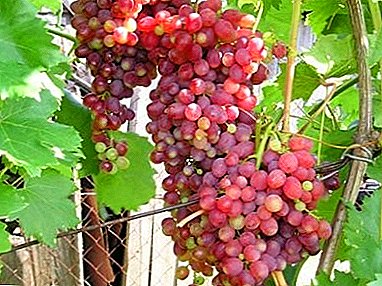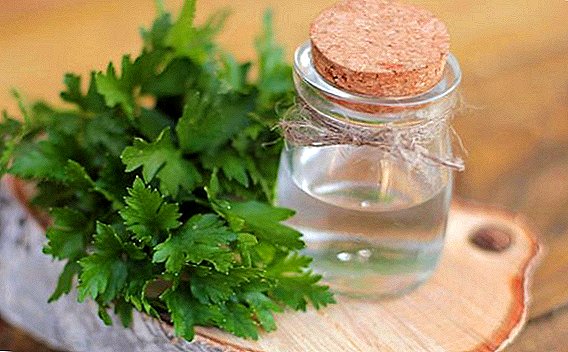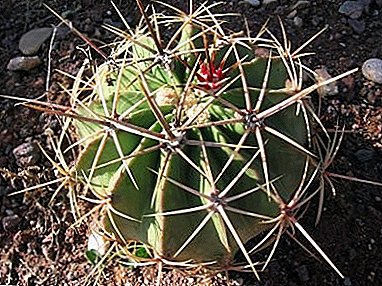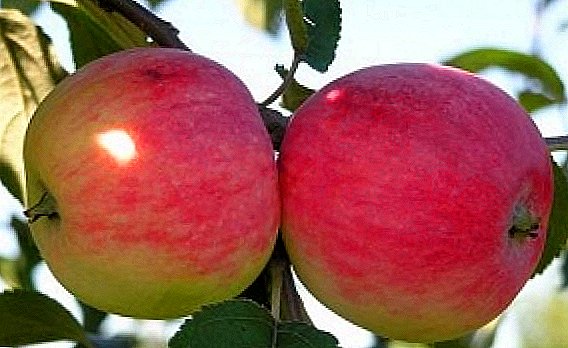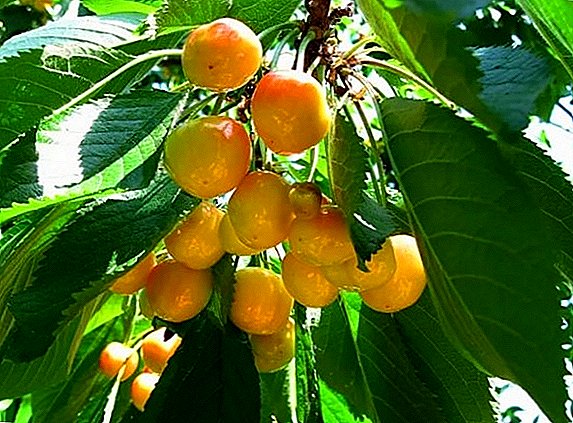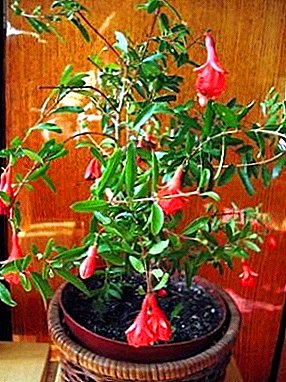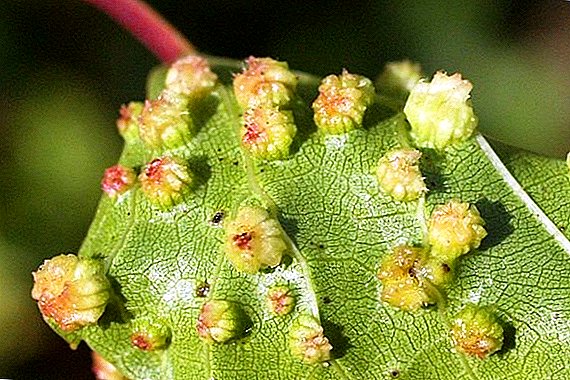 Everyone who faced with the cultivation of grapes, certainly heard of such a pest as phylloxera, which is considered to be the birthplace of North America. The first mention of its adverse effects on plants in Europe dates back to 1868, and at the end of the 19th century this pest destroyed about 6,000,000 hectares of European vineyards, thereby causing enormous damage. Now there are effective methods for the prevention and control of phylloxera, which we will discuss in detail in this article.
Everyone who faced with the cultivation of grapes, certainly heard of such a pest as phylloxera, which is considered to be the birthplace of North America. The first mention of its adverse effects on plants in Europe dates back to 1868, and at the end of the 19th century this pest destroyed about 6,000,000 hectares of European vineyards, thereby causing enormous damage. Now there are effective methods for the prevention and control of phylloxera, which we will discuss in detail in this article.
Description
Phylloxera, or grape aphids, is a tiny insect that can cause great damage not only to the harvest, but to the entire vineyard. This pest is very small, its length does not exceed 1-1.5 mm. It is rather difficult to notice it also because it is painted in pale green or lime color, due to which it is perfectly masked on the leaves and shoots.
Kinds
These pests can be winged and wingless. Their digestive system is designed so that they can feed on the roots and foliage of the plant, and in some cases even the tendrils and cuttings.
Root
Wingless grape aphid infects the plant root system and the underground shtamb. Tiny larvae with a size of only 0.5 mm are very hardy, they calmly hibernate under the ground, and when warming comes, that is, the temperature rises above 0, they become active and become females, whose dimensions are ~ 1 mm. 
Grapes also amaze: moth, scytwalka, spider mite, weevil, cicadka, thrips and wasps.
Wingless pests have a fairly long proboscis, which helps them to feed on sap from the root system of grapes. At the same time, phylloxera in the saliva contain harmful substances that through the proboscis enter the rhizome and infect it.
On the roots of grapes bloating and compaction, which interfere with the normal life of the bush, forms, it stops growing, and after a while it dies. The harmful insect prefers European grape varieties, they are not immune to this parasite.
Important! The root species is considered the most dangerous, the affected plants are uprooted, and the planting of grapes at this place is prohibited for 10-15 years, since the parasite is very difficult to eradicate from the soil.
Leafy
Accordingly, the winged, or leafy, phylloxera affects the green part of the plant, namely the foliage, and in a more advanced form, even the tendrils of the grapes. Parasites lay eggs on shrub wood, of which later larvae appear.  There is also a gall form of the pest that lives mainly on American grape varieties. These phylloxera form galls, tubercles on the leaves, in which after a while the larvae appear, and then the females. Having filled one sheet of paper with galls, the pests move to the next, and thus affect the entire bush.
There is also a gall form of the pest that lives mainly on American grape varieties. These phylloxera form galls, tubercles on the leaves, in which after a while the larvae appear, and then the females. Having filled one sheet of paper with galls, the pests move to the next, and thus affect the entire bush.
In either case, with the help of a proboscis aphid sucks the juice out of the leaf and infects it with its harmful saliva, provoking decay. The foliage is covered with tumors and blooms, and if there are a lot of insects on the shrub, the antennae and petioles of the plant suffer.
The most common diseases of grapes are: mildew, oidium, anthracnose, Alternaria and chlorosis.
European and Asian grape varieties are resistant to this type of pest and suffer from it extremely rarely.
The reasons
The problem is that with the help of wind, water during irrigation or precipitation, the pest spreads quite quickly and over long distances.  Winged individuals move freely for 100 m. Carry them and people on clothes and shoes, as well as pets and birds.
Winged individuals move freely for 100 m. Carry them and people on clothes and shoes, as well as pets and birds.
Important! In those vineyards where they find a phylloxera, quarantine is announced in order to avoid the spread of the disease.
Of great importance is what kind of grapes planted on the site. When planting European varieties should be aware that they are most vulnerable to the root pest. And the American has developed an immunity to wingless phylloxera, and they suffer from it much less often.
Grapes such as "Moldova", "Cabernet Sauvignon" and "Isabella" have good resistance to phylloxera.
As for the leaf parasite, the situation is somewhat different, American varieties are, on the contrary, predisposed to it, and the European ones are more resistant. Although it is quite subjective and depends not only on the variety, but also on such factors as the age of the bush and the soil on which it grows.
Young shrubs, roots of which are shallow in the ground, are affected by the parasite much more often than those whose root system is already well rooted.  Phylloxera prefers loose and structural soil, because moisture is well retained in it and there is enough oxygen, and warmth is preserved, all this is mandatory conditions for its "prosperity" in the vineyard.
Phylloxera prefers loose and structural soil, because moisture is well retained in it and there is enough oxygen, and warmth is preserved, all this is mandatory conditions for its "prosperity" in the vineyard.
We advise you to get acquainted with the features of planting grapes cuttings and seedlings (spring and autumn).
And if you plant grapes on sandy, loamy and clayey soil, the parasite will be much harder to damage it. It is difficult for an insect to maintain vital functions where moisture and air do not linger, but in the sand it dies, suddenly dies.
It should be noted that the climate does not matter much, the parasites easily tolerate the winter and persistent frosts, and with the onset of freezing temperatures become more active.
Did you know? The historical fact is that the vineyards suffered not only from insect pests, great losses in this area are also directly related to wars. This is especially true of the ancient periods when, for example, a conqueror such as Tamerlane burned vineyards during his offensive.

How to fight
Experienced winegrowers recommend planting material in quarantine, as well as giving preference to pest resistant varieties. If the seedlings are infected, they should certainly be processed, and for this there are two ways: fumigation and wet.
The first is applied when the harmful insect is at rest, that is, in the cold season. It carries out its sanitary service, which must necessarily report on the foci of phylloxera. The method involves the treatment of infected areas with special preparations.
Wet treatment is carried out in the period of active life of the pest. It lies in the fact that the plants are treated with an emulsion of the gammoisomer of hexachlorocycloclamelaxane.
Also, an effective method of combating the parasite is to shelter young bushes with polyethylene covers in combination with planting to a greater depth. If this recommendation is observed, the insects have a very small number of chances to settle on the root system of grapes.  There is also a way to combat phylloxera, which consists in the treatment of fungicides and insecticides, that is, chemicals. Appeal to it three times during the growing season: immediately after the appearance of the foliage, before flowering and after the ovaries have formed on the bushes.
There is also a way to combat phylloxera, which consists in the treatment of fungicides and insecticides, that is, chemicals. Appeal to it three times during the growing season: immediately after the appearance of the foliage, before flowering and after the ovaries have formed on the bushes.
With the help of chemistry, vineyards contaminated with phylloxera are treated. To do this, there are many drugs, and the popular and effective include:
- "Malathion";
- "BI-58";
- "Kinmikson";
- Zolon;
- "Confidor";
- Mitak.
Important! You should always follow the rules of planting the plant and retreat the desired distance between seedlings, since poor ventilation of the shrub can contribute to the appearance of the parasite.

The use of vaccinations, that is, stocks, is also referred to as effective methods of controlling these pests. The most important thing is that the cuttings of the grafted plant be healthy. Also stocks should have a high immunity to the grape aphid. In cases where the grapes are infected with the root phylloxera, volatile carbon disulfide is used.
Its dosage depends on the degree of damage and neglect of the vineyard. With a maximum of 300-400 cm3 per m2, it is possible to destroy the pest and clean the soil, but it does not save grapes, so the dosage can be reduced to 80 cm3 per square meter and save the plants.
Did you know? It was the phylloxe that destroyed the grape varieties from which the famous “Madera” wine had previously been made, it happened in the 19th century, but, fortunately, the growers were able to replace it with other varieties, and the wine pearl did not disappear without a trace.

Prevention
Preventing the development of the disease is always much easier and better than treating it, and this happens in the case of preventing the occurrence of phylloxera. Observing the rules of planting and keeping seedlings in quarantine, you already significantly reduce the risk of infection.
Also, do not neglect the preventive spraying, which experts recommend at least 3 times during the growing season, namely after the first 3-5 leaves blooming, before flowering and after the formation of grape brushes.
Also of great importance is the observance of the rules of agricultural engineering, planting in the right soil will provide reliable protection to the vineyard. Recall that phylloxera does not affect plants that are planted in loamy, clay or sandy soil. Grafting grapes with more resistant rootstocks is also able to minimize the chances of infection with phylloxera. Another method of prevention is the flooding of the soil with the help of water mixed with toxic substances, but it is very laborious and ineffective, as it only stops the pest in the soil for a certain time, therefore experienced growers turn to it extremely rarely.
The most important thing - it is necessary to understand that phylloxera is a very dangerous pest, which is extremely difficult to fight. Therefore, before planting grapes, it is important to familiarize yourself with the characteristics and origin of the variety, and also to pay attention to the degree of its resistance to this pest.


